by Omar Cruz Rodriguez
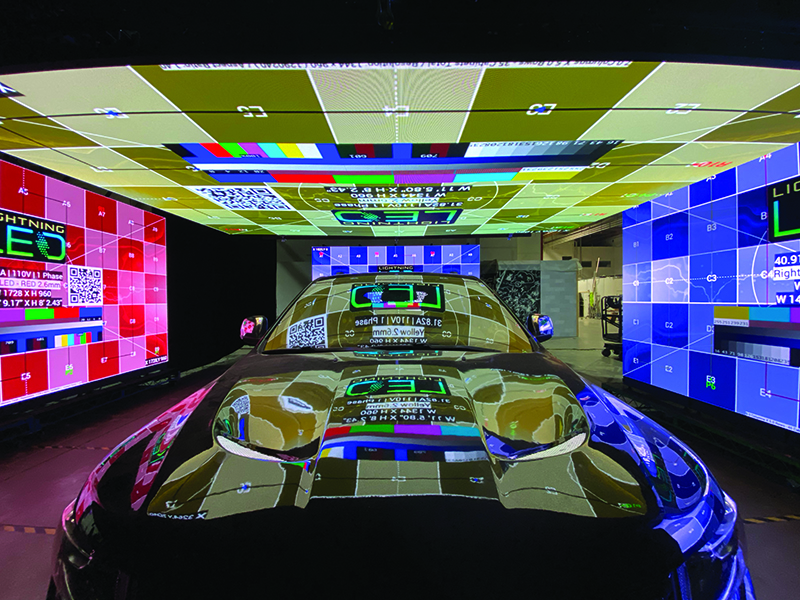
My Hollywood journey began in high school, when my history teacher assigned a presentation project to our class. We had three options: we could give an oral presentation in front of everyone, we could write a paper, or we could make a video. I was one of the few who chose to make a video and, quite by accident, I fell in love with the process. After a buddy of mine showed me how to use Windows Movie Maker on my family’s home computer, I was hooked. After graduation, I signed up for the film program at my local community college and eventually got my first industry job at a rental house. I worked my way up from delivery driver to prep tech, where I got lots of experience working on specialty rigs, VR setups, and multi-cam Bullet Time rigs. As I became more proficient with specialty equipment, my manager began sending me on set to engineer the gear for a variety of high-profile music videos for artists, including Selena Gomez, Bad Bunny, and Migos. As it turned out, this work in specialty rigs became a primer for the sort of video wall engineering work that I do today.
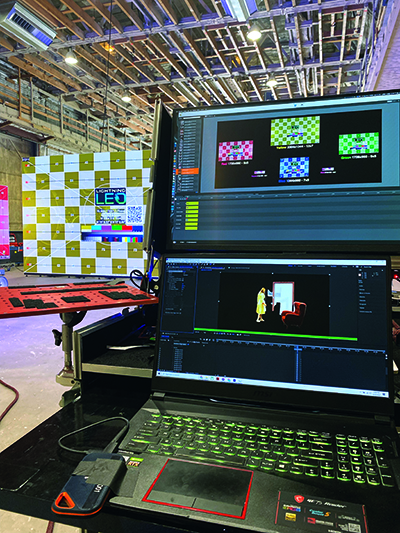
Since 2019, a growing number of film and television productions have been making use of video wall technology. By innovating on the sort of projection and playback work Local 695 engineers have been doing for decades, productions have the ability to incorporate large walls made up of interconnected LED panels into the set. Rather than utilizing green screens or going out on location, an LED wall allows filmmakers to simulate nearly any environment in a controlled setting. Not only does this eliminate the need for expensive and time-consuming post-production visual effects work, it allows, for example, a magic hour sunset that can last an entire shooting day or the ability to place a full moon in the exact spot you want. This gives the Director of Photography more creative freedom in their projects and allows for a consistent look between setups. For actors, the immersive nature of virtual production gives them something to play off of during performances. It’s a lot easier to react to a beautiful, awe-inspiring vista when it’s being simulated right in front of you. More importantly, the director now has the ability to see something much closer to the final product when capturing scenes. It helps productions feel confident they’ve shot the necessary footage to assemble a given scene and can even be used as a tool during pickups to recreate an exact environment as it existed months or years prior.
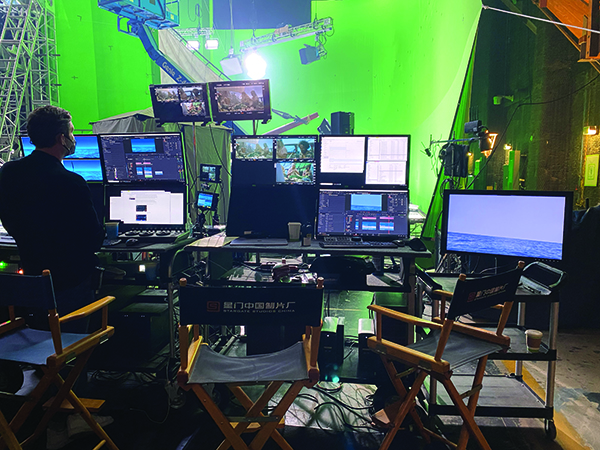
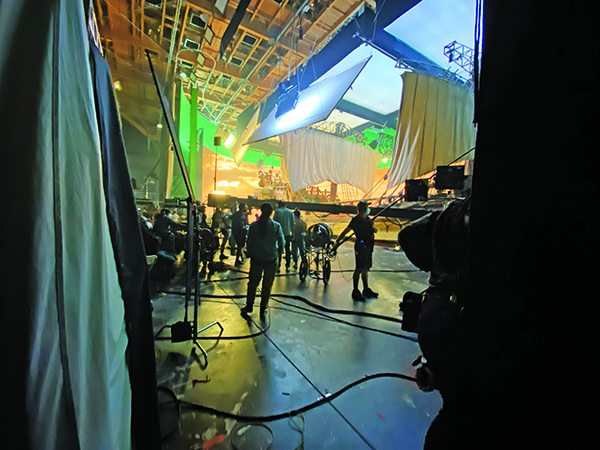
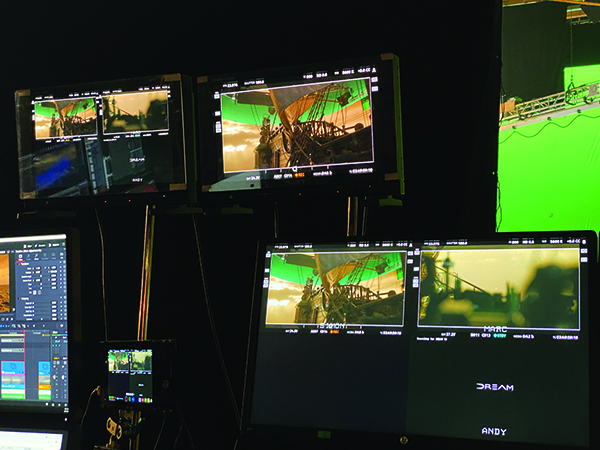
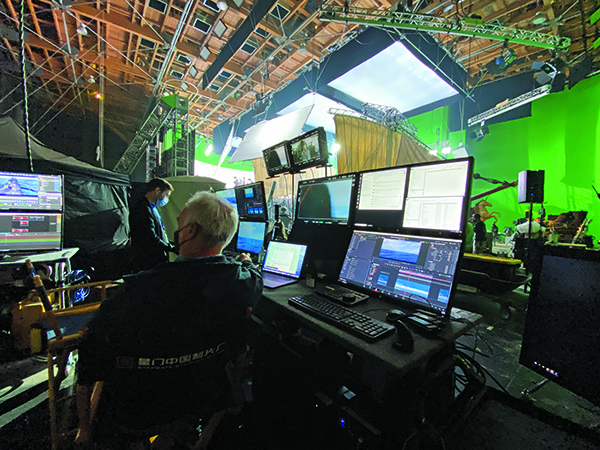
Video wall work makes up the majority of the work that I do today. In the past two years, I’ve worked on a variety of productions, including Station 19, The Idol, Sausalito, Bishop’s Birthday/Sugar, All Rise, After Party, The Deliverance, Good Trouble, Our Flag Means Death, and White Noise. The Deliverance, directed by Lee Daniels with DP Eli Arenson, was probably the most significant experience so far. I was entrusted with taking over the role of a lead LED playback operator. During the shooting process, many responsibilities fall on the playback operator and I needed to be on the ball in order to do my job correctly. That said, the experience was a huge success and it felt phenomenal to work with such an awesome team and to know how integral my contributions were to the process.
Most recently, I’ve started working with Stargate Studios—a VFX house that has expanded into virtual production work. Working with Stargate has been a great experience. It’s a welcoming environment focused on innovation and growth. Stargate CEO Sam Nicholson and his team have a long history of creating solutions for various productions, the most noteworthy of which include The Walking Dead and Grey’s Anatomy. I was hired by them to work as a media playback operator for the HBO series Our Flag Means Death, a comedy by Taika Waititi. This show was incredibly unique because the majority of the show was done utilizing a huge LED wall and virtual production techniques. The show had terabytes of ocean plates to manage, a 30 x 160 foot tall LED wall that wrapped around a huge pirate ship that held an entire cast and crew on it. Stargate was pivotal in engineering the demo that green-lit the virtual production aspect of the series. It really showcased how virtual production can help immerse actors and save production a lot of money in CGI and extensive post work.
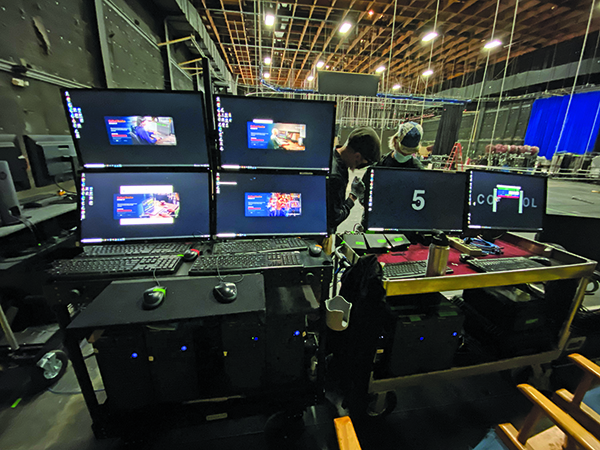
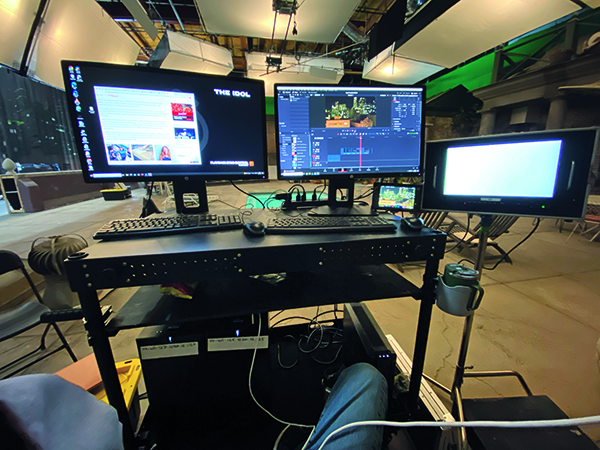
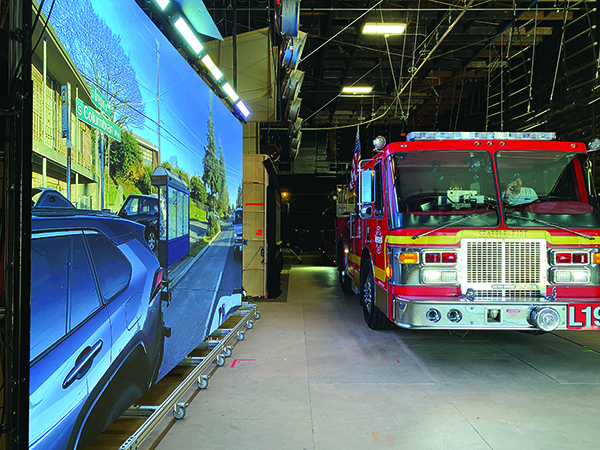
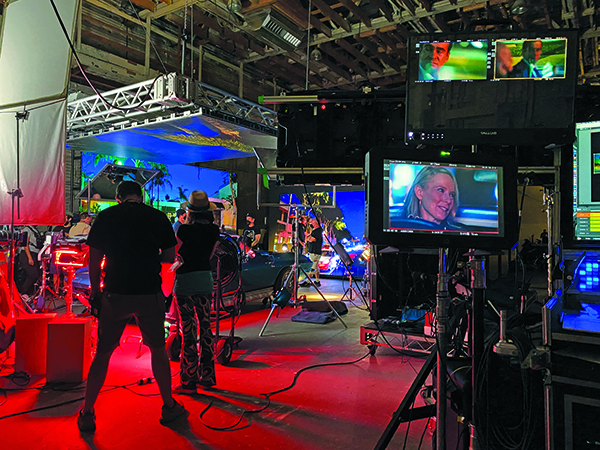
However, operating these video walls can present quite a challenge and requires input from multiple departments across the set. This means that a video playback engineer or LED technician needs to be something of a jack of all trades. Getting an image up on the screen and playing it back involves an understanding of cameras, their color sciences, video color spaces, lighting workflows, playback software, nonlinear editing programs, and so much more. The newest setups utilize advanced camera tracking and 3D animation, so even a little understanding of Blender, Unity, and Unreal is helpful. With so many different variables, it’s important to understand how different units interact with each other in order to produce different types of images.
The video wall workflow starts after a DP has selected the plates for the shoot and relays that selection to the LED wall team. It helps to know how the plates were shot in case they need a corresponding camera LUT applied and to ensure that they are optimized for playback. Every camera has its own unique color science, which in turn requires its own unique LUT. A LUT, or look-up table, is a file containing a mathematical value that is used to create a specific visual look or to work within a specific color space. Often, the effects are not interchangeable between cameras, meaning that an understanding of multiple cameras and their color sciences is required. Otherwise, you might throw an Alexa Day4Nite LUT on some Red footage and find that the LED wall looks like a scene from Mars. Then comes the setting up of the hardware, the LED walls, and the playback server. Setting up the LED walls takes a team, installing, leveling, and networking is tedious but very crucial. The playback server has its deep technical aspects but the main purpose is to provide tools for the DP and DIT to make any visual changes before and during the shooting process. Every show is different and no DP lights their scene the same way but no matter what show it is, I strive to be organized and prepared to make changes and have the tools at my disposal needed to achieve a desired look.
In the two years that I’ve been doing this sort of work, the process has been a continually evolving one. New panels, new playback solutions, and new network integration options are coming out all of the time. Moreover, as productions become more familiar with the capabilities of virtual production, even greater demands are being made of the technology. This creates something of an endless race for playback specialists, as we have to keep up with these innovations as our careers progress.

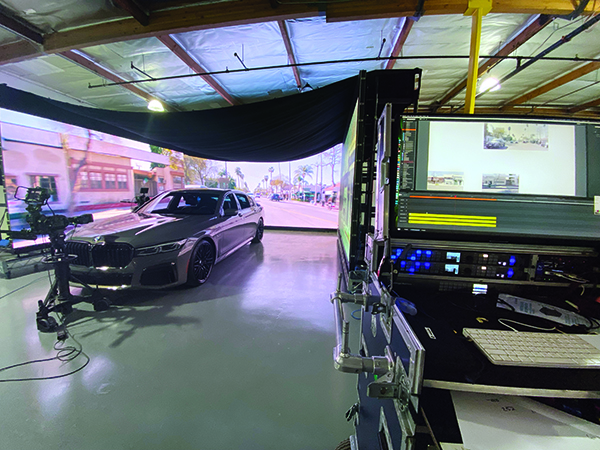
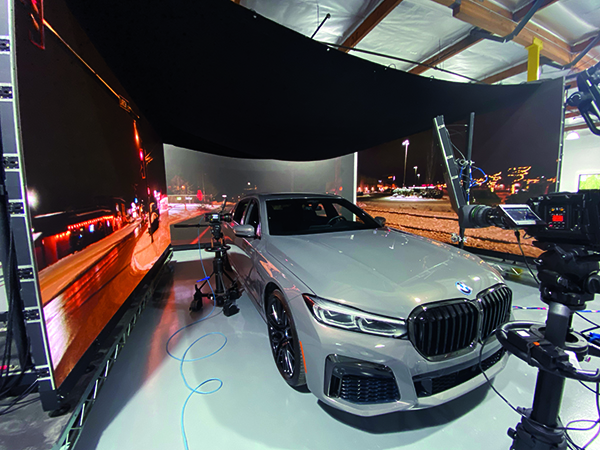

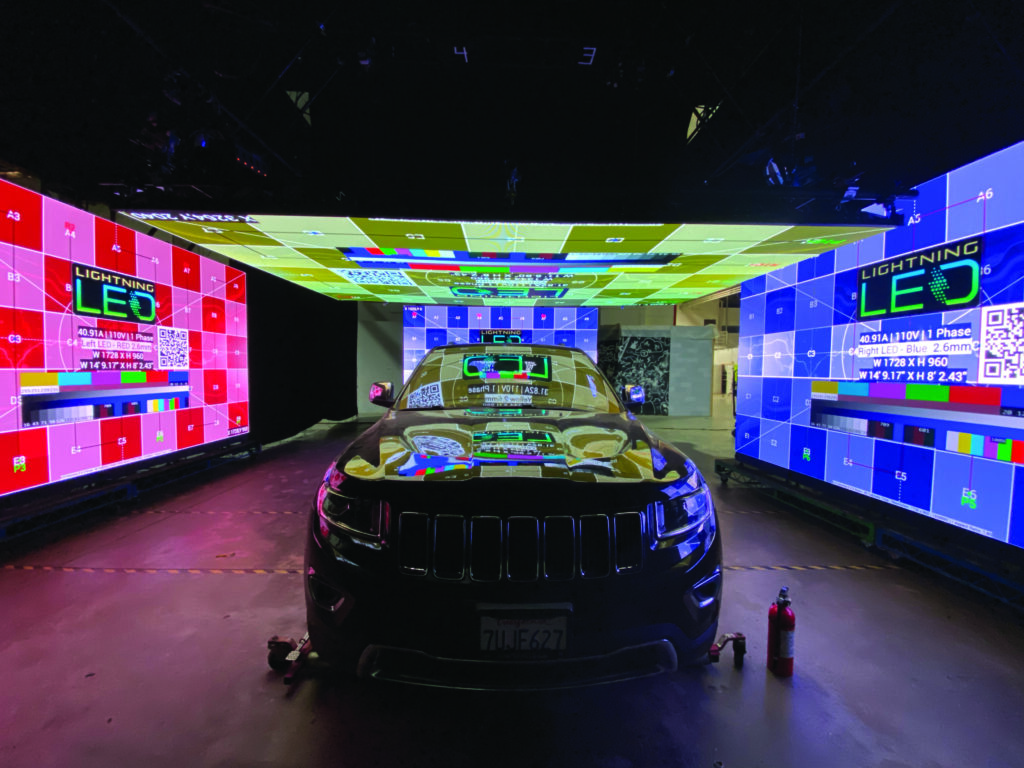
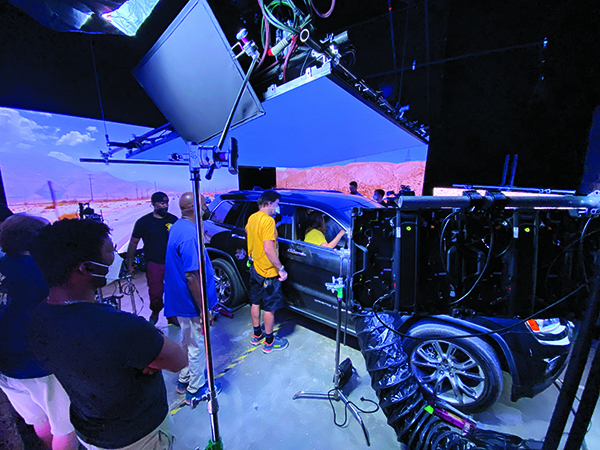
Speaking of my career, there are a few people that I would like to shout out. Seth Fine, Shahrouz “Shawn” Nooshinfar, Storm Flejter, Lucas Solomon, and the rest of the crew at Lightning LED really took my experience to the next level. Seth got me into the union. His beliefs in proper pay and representation by a union really helped me feel validated that my work/skills really mattered. Storm, along with Seth, helped me be an all-around LED technician, not only running playback but setting up the walls also. Shawn is the Lead Engineer, who has mentored me a lot as well, taking deep dives into playback systems that I’m still learning all the ins and outs of today. Lucas, head of operations, and his son Connor Solomon are some of the hardest working people in the industry you’ll ever meet on this planet.
My journey in production also wouldn’t have been possible without my family. My siblings, parents, in-laws, and especially my wife have all been vital in giving me the support and opportunity to pursue this taxing career. Long hours and an unpredictable schedule make it hard to find reliable day care options, which has made family crucial in caretaking of our son. Finding the balance between work and life helps when you have a strong community to pick you up when you need a hand. I am fortunate to have such a strong support system, both at work and at home.